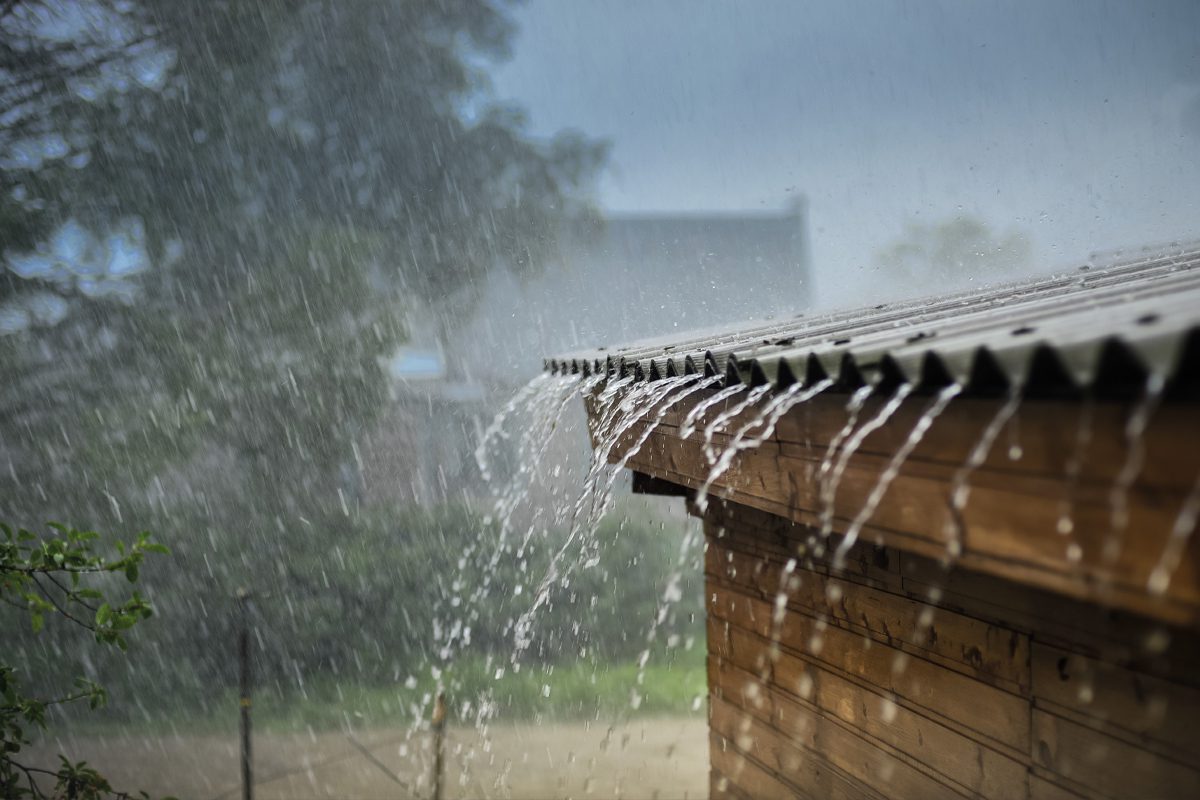
Kevin Reed, Water Recycling Manager at SDS, puts the case for rainwater harvesting to be prioritised as part of SuDS designs
2020 has been a year of extremes in more ways than one.
In the first two months, unprecedented levels of rainfall caused flooding, devastation and heartbreak. “Welcome to the climate emergency”, Sir James Bevan, Chief Executive of the Environment Agency said, warning that, without urgent action, more communities will flood more often and more seriously in future. Weather fluctuations of drought and heavy rain have persisted as our rollercoaster year continues.
Sir James has warned that surface water is “the biggest flood risk of all”; “a real and growing threat – to life, to property, to the economy, to the country”, with over 3 million properties at risk. Meanwhile, his “jaws of death” metaphor has come to signify that, at the present rate, we will no longer have enough drinking water to meet demand by 2050.
Flooding and drought
Meteorologists have known for some time that longer periods of drought, interrupted by more intense downpours, are inevitable. Environment and water professionals are, perhaps, uniquely capable of taking a bird’s eye view of these changing weather patterns to know that flooding and drought are just two sides of the same coin.
Whether the ground is parched, or saturated, surface water runoff must be managed and prevented from causing damage or danger. Dealing with rainwater as close as possible to where it falls is the most sustainable, and energy-efficient, approach.
Yet, whenever there is an over-abundance of rainwater, we are failing to save it. Instead of valuing it as a precious resource, we treat it as waste that causes flooding as it flows away into over-burdened drains, sewers and rivers. While other waste industries live and work by the three-point priorities of “reduce, reuse and recycle”, it is not a mantra you will hear very often in stormwater management circles.
In Sir James’ words: Wasting water should be “as socially unacceptable as blowing smoke in the face of a baby”.
Wasting mains water
A Thames Water study * estimated that 33% of residential, and 60% of commercial, drinking water is consumed for non-potable purposes. In such circumstances, the concept of using attenuated and stored rainwater for toilet flushing, laundry, vehicle washing, or garden irrigation seems like the proverbial “no brainer”.
For many years, the campaigning case for Sustainable Drainage Systems (SuDS) has been in the vanguard of arguments for improving flood resilience. So, could SuDS provide the answer to the flood/drought nexus? And where does rainwater harvesting fit into SuDS design?
Well, take a look at CIRIA 753, The SuDS Manual, widely acknowledged as the ‘bible’ for SuDS and referenced by consulting engineers and designers who specify the majority of drainage schemes for developers. Not only does it identify rainwater harvesting as an important SuDS component, but clearly places reuse right at the top of the design hierarchy.
If the battle for climate resilience is to be won… then rainwater reuse systems must reclaim their place at the top of the SuDS hierarchy…
SuDS hierarchy
In terms of regulation, the decision by the Welsh Government to enact Schedule 3 of the Flood and Management Act 2010 is encouraging and could lead the way for wider take-up in Wales at least. Welsh Statutory National Standards for SuDS set out a design hierarchy with Priority Level 1 stating that surface water runoff should be collected for reuse.
By contrast, in England, the non-statutory guidelines that accompany much less prescriptive requirements for SuDS through the National Planning Policy Framework (NPPF) make no such commitments. While many Local Authorities and some Water Companies have produced their own guidance, they frequently place infiltration as the first priority and reuse gets completely overlooked.
The London Plan Policy 5.13, however, states that SuDS should be used unless there are practical reasons for not doing so, and that the hierarchy should begin with the consideration that rainwater is stored for later use.
And what happens if your rainwater collection tank is full and it’s still raining? To avoid flooding, and meet discharge consents, most designs require a second attenuation or storage tank. Regulations require the collection tank to be able to store 18 days’ of water and an additional attenuation tank for drainage. This can be costly, both in terms of capital and installation costs, as well as in land take.
Intelligent systems
For a few years now, advances in ‘smart’ instrumentation, telemetry and cloud-based management and monitoring systems have been harnessed to develop intelligent systems. The central principle of SDS Intellistorm® is the use of weather prediction data, downloaded via secure mobile phone signal, to control the levels of rainwater in a single tank for both attenuation and reuse. When a storm is predicted, the tank can be emptied automatically in plenty of time to allow the spare capacity to be used as a defence against surface water flooding.
As a result, the costs of building and operating a rainwater harvesting system are significantly lower. What’s more, a digital cloud-based system, such as SDS’s SYMBiotICTM system, can also provide a wealth of data on system performance in order to better plan maintenance and demonstrate water savings in real time.
If the battle for climate resilience is to be won, and the expected future water shortages are to be avoided, then rainwater reuse systems must reclaim their rightful place at the top of the SuDS hierarchy and be considered by designers, specifiers and planners as a priority. That means a concerted effort to educate and train engineers, developers and Local Authority planners, as well as investment in technology.







